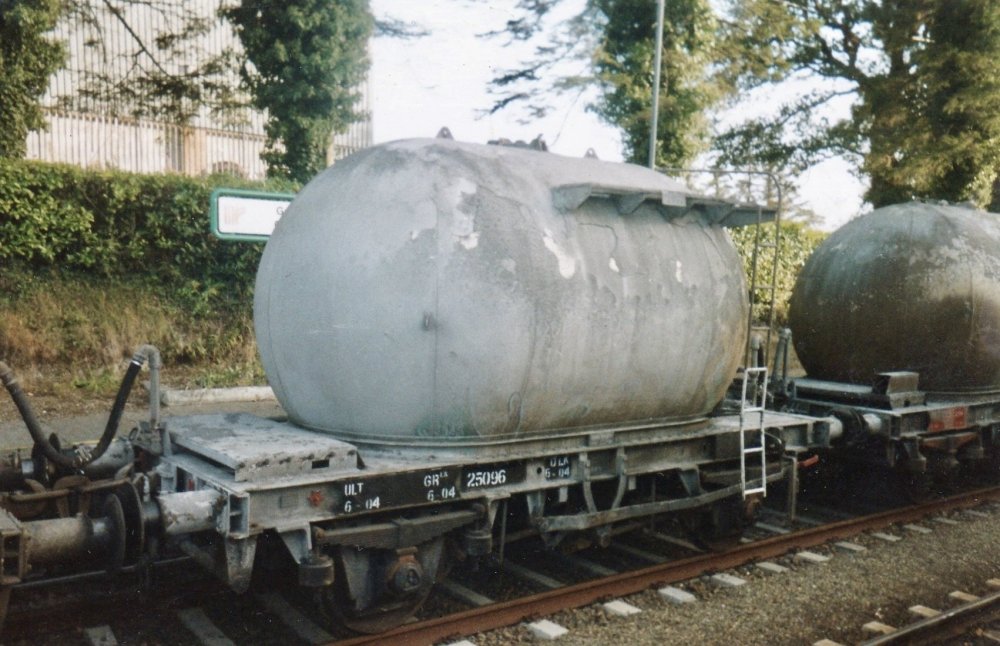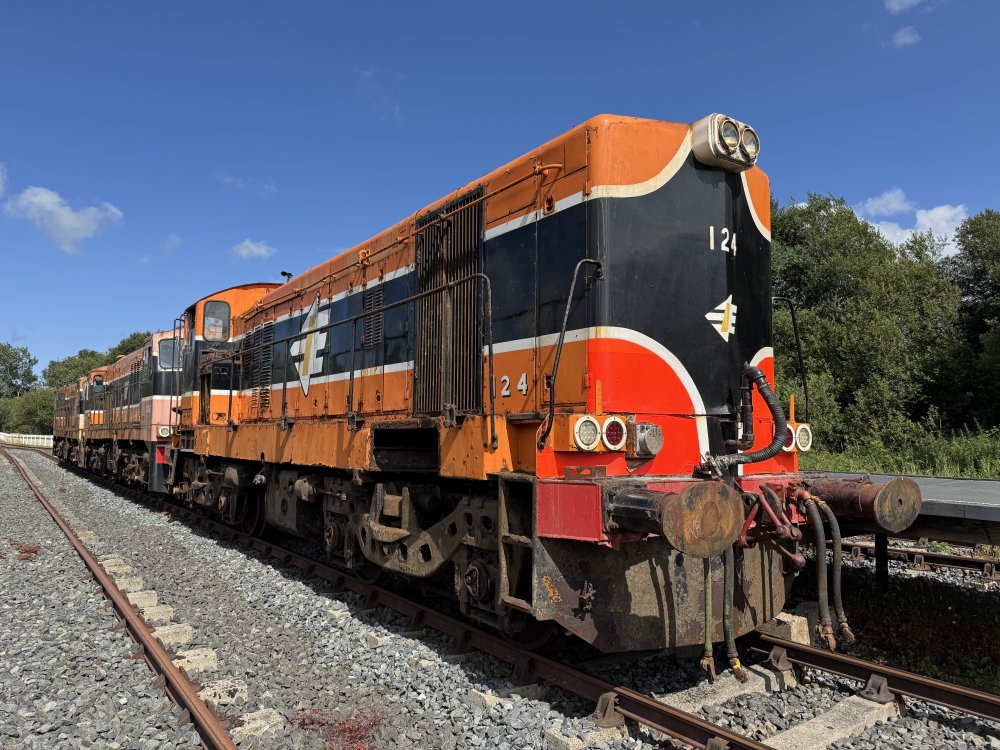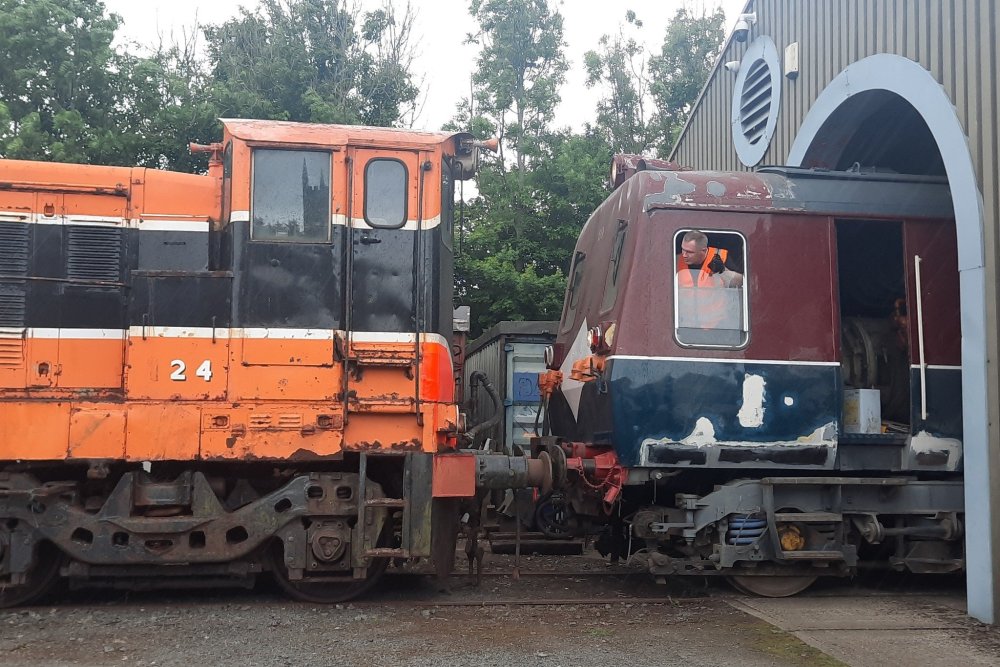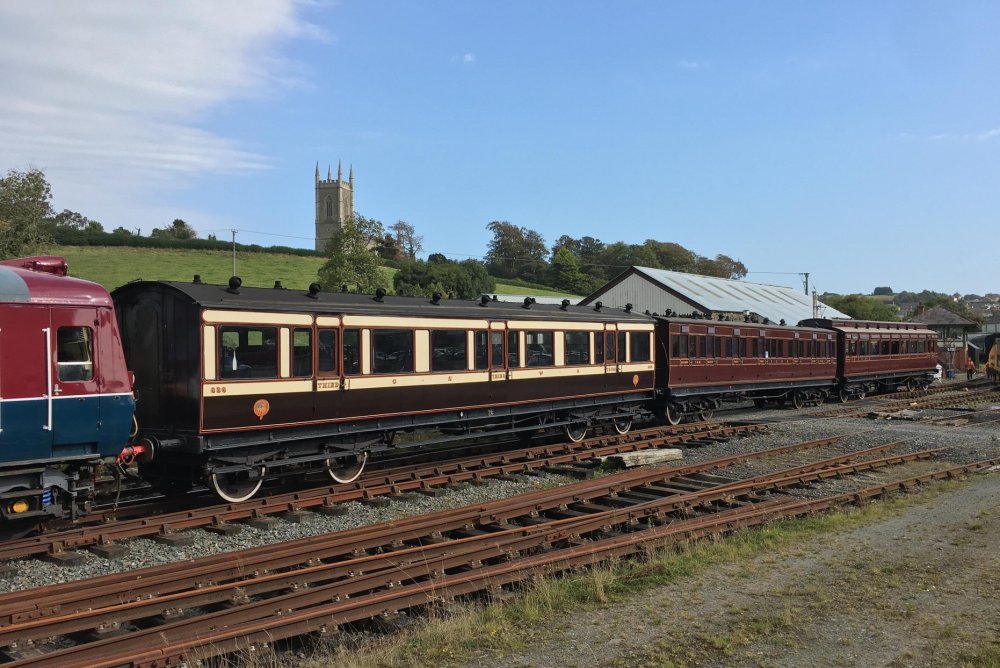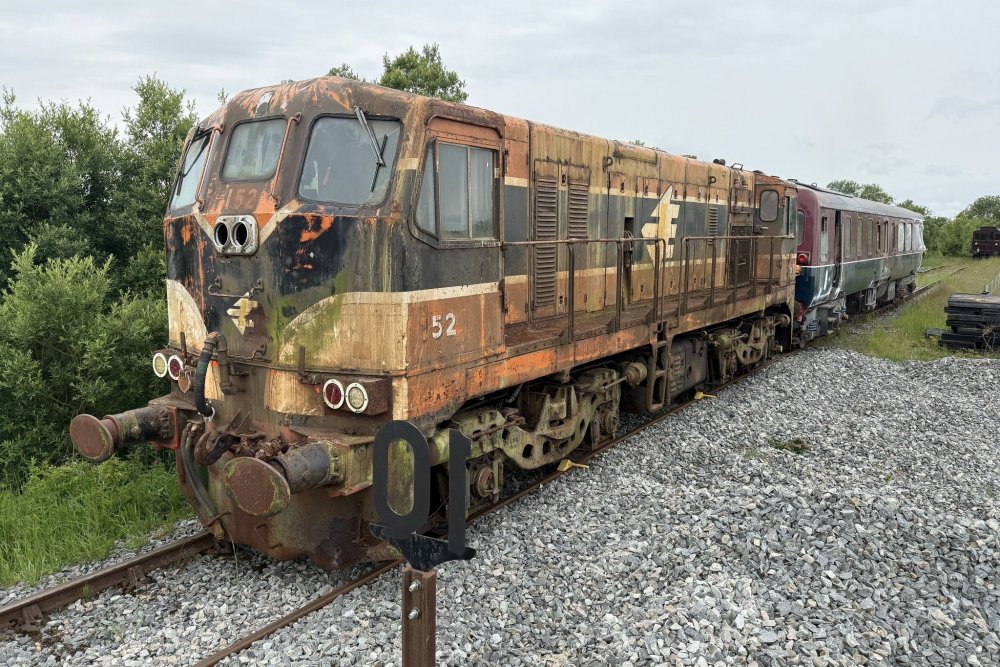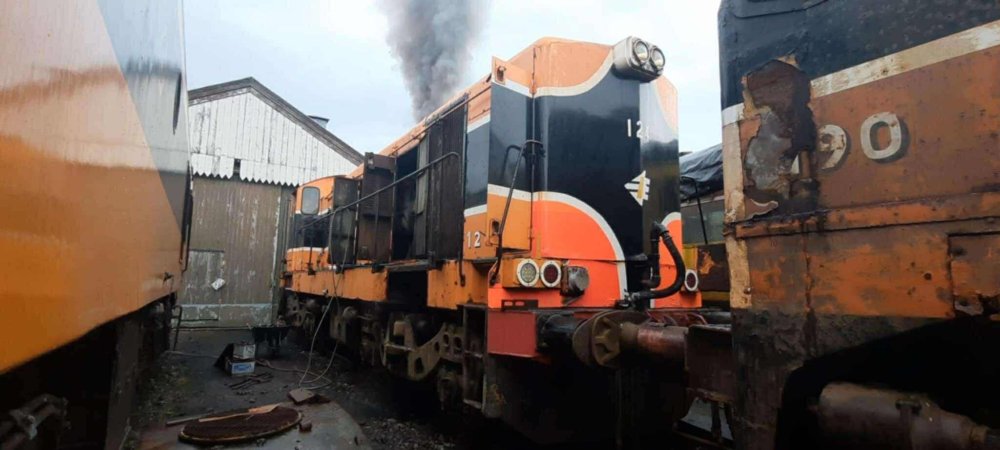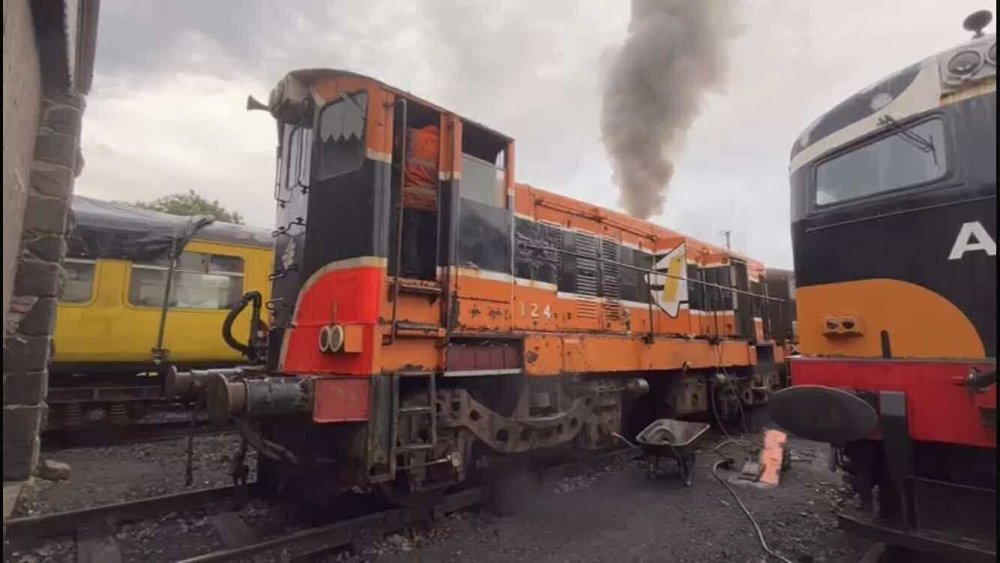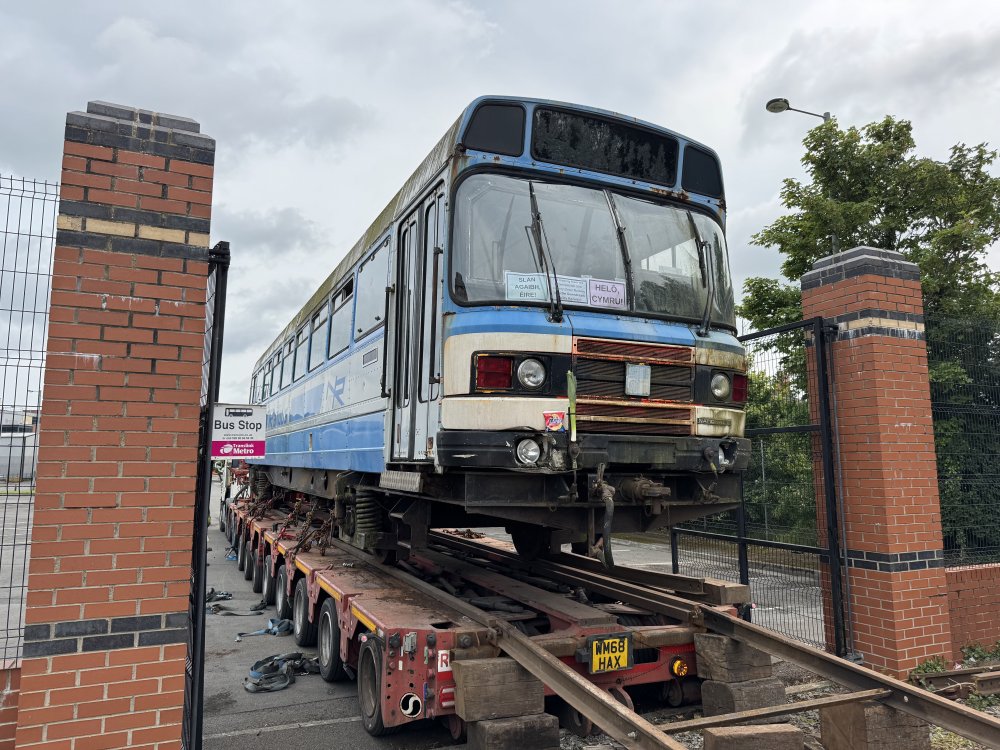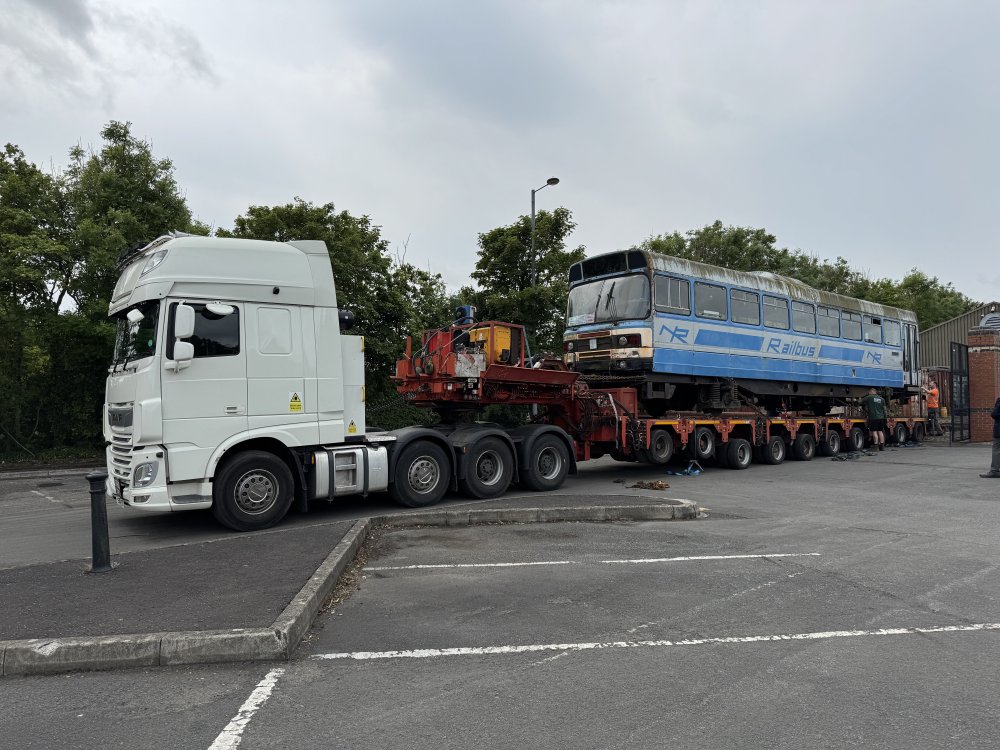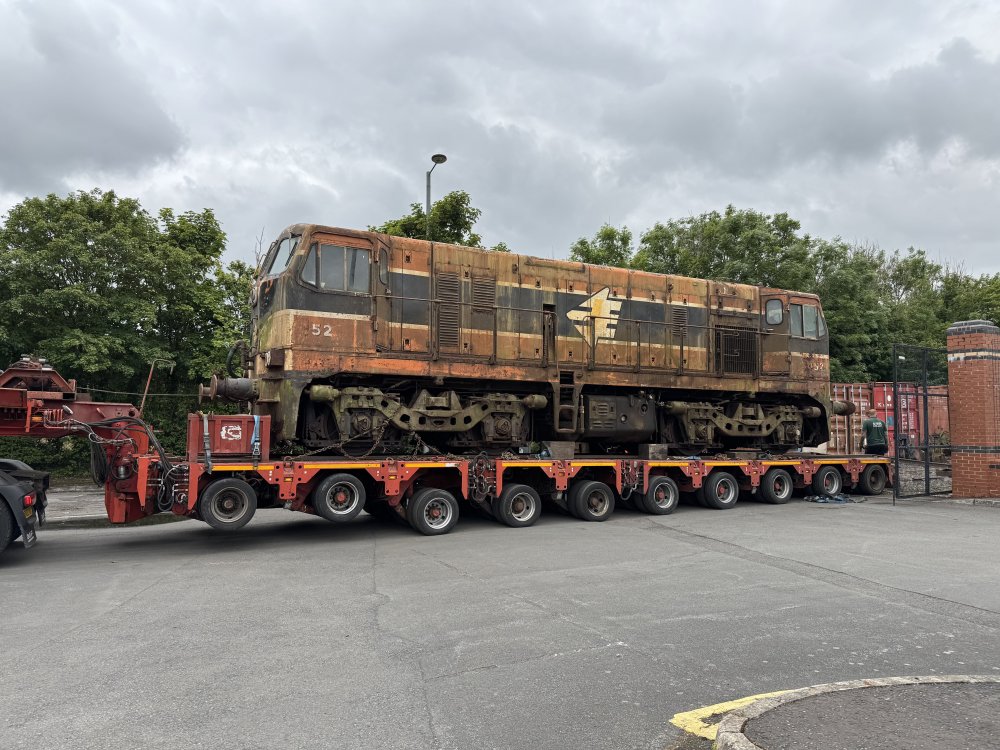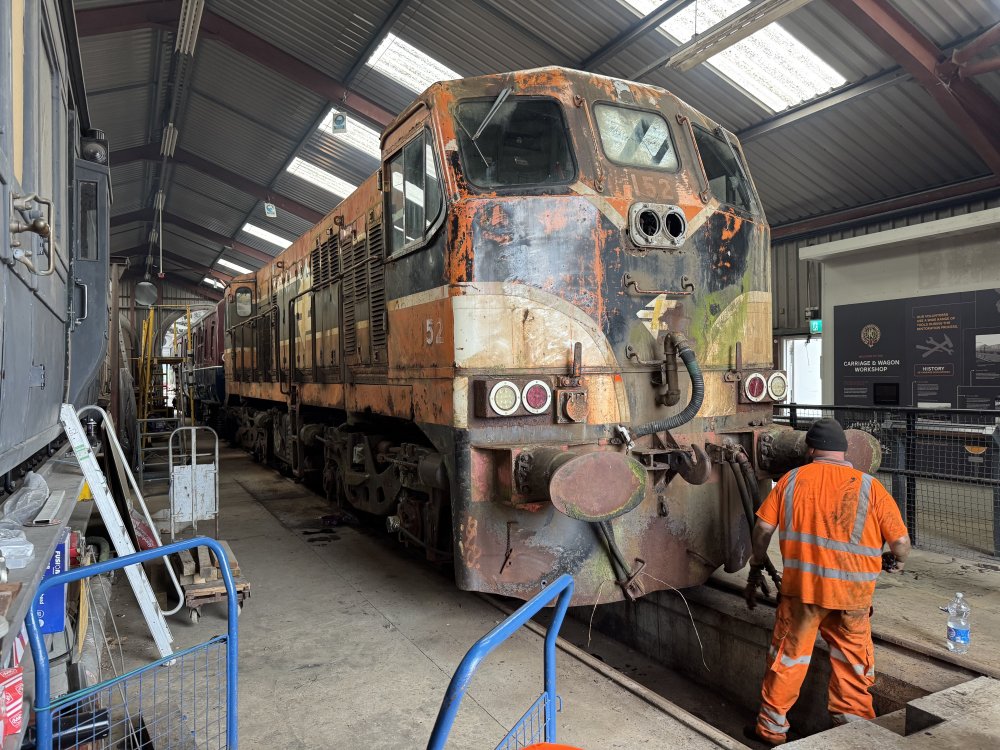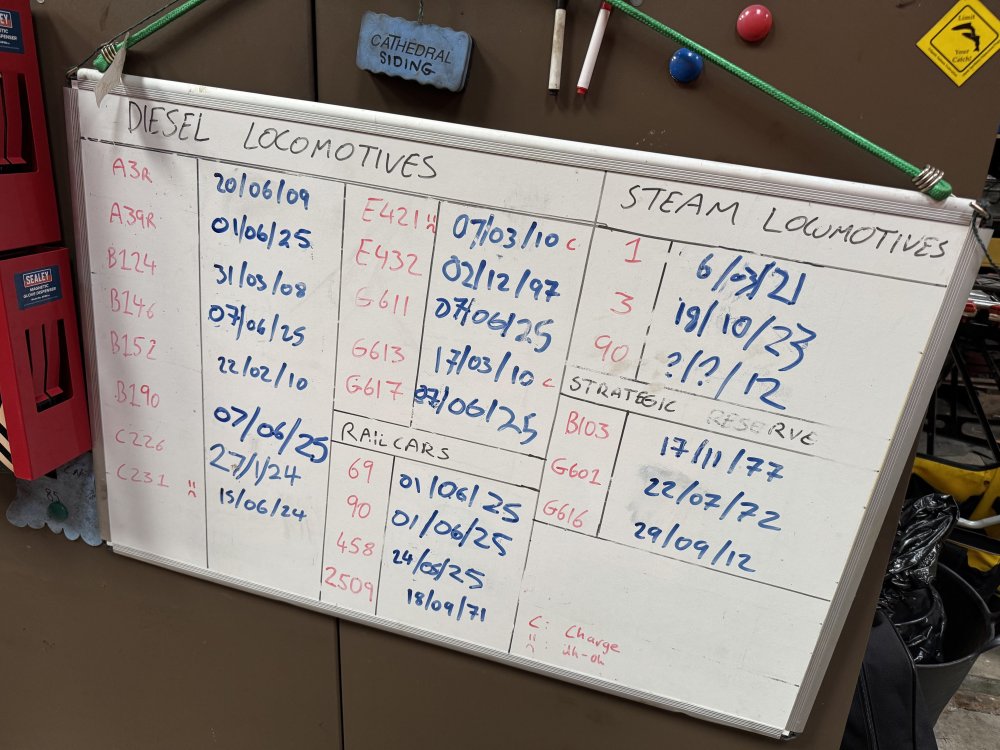-
Posts
144 -
Joined
-
Last visited
-
Days Won
3
Content Type
Profiles
Forums
Events
Gallery
Blogs
Store
Community Map
Everything posted by GSWR 90
-
-
A classic – No. 90 (then known as "C") in as-built condition, with attached first-class compartment and guard's/freight van. Some time between the 1870s-1900s approx.
-
I am always quite tickled when I see a photo/video of a preserved loco/railcar/carriage/etc. when it was in service. Please feel free to post any photos like this below. To get the ball rolling, here are some DCDR locos before preservation CSE Thurles No. 1 in the 1950s. 146 and 190 near Kildare, March 2008. Photo by Dylan Kinsella. GSWR 90 (then Castleisland Railway "C") in as-built condition, probably when it was built in 1875. B124 being unloaded in Dublin, the first GM loco to arrive in Ireland. Photo by Jim O'Dea, 1961.
-
A few years ago someone showed me some GNR carriage records which showed the numbers of the GNR third class six-wheelers which were sold to the BCDR (like the one at Downpatrick). However the register also showed two of these U3s being converted into “aeroplane trucks”. Anyone have any idea about these? Just an underframe like a carriage truck, but for carrying aeroplanes, perhaps as part of the war effort? How do you fit an aeroplane on a carriage truck? I’d be fascinated to see any photos
-
The Broad Gauge Society (the 7’ broad gauge, not our one!) recently posted this on their excellent Facebook page, accompanied by the photo attached: “Taken at Cheltenham shed in the late 1840s. On the left, 'Star' class 2-2-2 Polar Star has not yet had its frames and boiler lengthened by 2'0", which happened in 1849. Second is 'Pyracmon' class 0-6-0 Alligator. On the right is 'Sun' class 2-2-2 Javelin. The photo was possibly taken by GWR employee Hugh Owen, a close friend of photography pioneer Henry Fox Talbot, and is among the earliest railway photographs ever taken.” So the earliest British railway photos were likely from the 1840s. Does anyone know of any contenders for the oldest Irish railway photos?
-
Apologies for the brief interruption. We now resume normal programming. The engine shed was damaged during the flood, so we weren't allowed to access it or the locos inside. Work on repairing it is progressing fast, and last week we were able to remove 90 from the shed and moved to the workshop at the other side of the yard. Yesterday we had about a dozen volunteers working on the loco at one time, so we were able to do a huge amount of work in just one day: Cab front removed Cladding and lagging removed Boiler fittings removed We're now in contact with boiler contractors and are working on a fundraiser for 90's overhaul. Our volunteers come from across the island – from Dublin, Belfast, Kildare, Meath, and even Derry~Londonderry. If you want to learn new skills, meet new people, and play your part in preserving our shared industrial heritage, please send me a message to ask about getting involved.
- 46 replies
-
- 12
-

-

Where to get Edmondson tickets printed?
GSWR 90 replied to GSWR 90's question in Questions & Answers
That was quick, thank you! Email sent. -
DCDR has several thousand unprinted Edmondson railway tickets. Does anyone know where we could get these printed with our own text on them? Thanks!
-
You’ll now need to invest in a set of ballast hoppers and a plough van. Plus two 141s, two As, a 181, a Park Royal…
-
All great snaps. There are some fantastic pictures in Mark Kennedy’s book “The LMS in Ireland” of the Moguls being lifted – tender and loco at the same time – by floating crane over to Queen’s Island for overhaul by H&W
-
Thanks to a generous preservationist, Downpatrick and County Down Railway has been presented with the opportunity to preserve the last surviving CIÉ cement ‘bubble’ wagon, but we need your help. As you can imagine, transporting a rail vehicle, even a small one, is not cheap, with £1700-1800 being the ballpark figure we need to raise for transport alone. Some of our volunteers have already pledged donations, but we need YOUR help to get us over the line and make this happen. These wagons are particularly popular with enthusiasts, in no small part thanks to the high-quality OO gauge models of them produced by IRM. Apart from the major cost of moving the vehicle, we will also need to spend money prepping this wagon for display – when the time comes, heavy-duty cleaning supplies, paint, and decals will likely not be cheap. This opportunity won’t present itself again, and any donation, small or large, will be very much appreciated. If successful, we would envisage that the wagon will go on display at Downpatrick, and, hopefully, will take part in demonstration freight trains for special events (our ballast hoppers have already proved quite popular at our diesel days). This is the ONLY chance to ensure the preservation of this historically important, iconic wagon – if we miss it, it’s gone forever. Please support our appeal and help us ensure that this bubble doesn’t end up burst. You can donate online at the following link, and make a note in the comments/notes section stating that you would like it to go towards the cement wagon: https://www.downrail.co.uk/donate/ Many thanks for your support. A bubble at Gorey, from the DCDR collection Our very own 039 with a rake of bubbles, courtesy of Sean Devaney
- 27 replies
-
- 13
-

-

-

-

-
For those who missed 124 at the diesel gala, it will be running with the vintage carriages for European Heritage Open Weekend on the 13th and 14th of September https://www.downrail.co.uk/event/ehodni/
-
- 168 replies
-
- 15
-

-

-
Source or it didn’t happen
-

Heritage Railways in the Republic of Ireland
GSWR 90 replied to Celtic_transport's topic in General Chat
I don't think wealth, i.e. people not being in a financial position to donate to heritage railways, is a major issue for preservation in Ireland. Ireland is a well-off place, not to the same extent as Switzerland but it's roughly on par with the UK, which has 100+ heritage railways/museums which tens of thousands of people regularly donate to to keep them running. Of course, there aren't multi-millionaire railway benefactors in this country to the same extent as in Switzerland or Britain, but the vast majority of railways in the UK are run without huge cash injections like that. I can't get behind the idea that people in Britain and Switzerland are able to afford to donate to heritage railways in their respective countries, but people in Ireland are unable to do so here. Even before the housing and cost of living crises, people in Ireland were reluctant to donate – case in point, there's only one standard gauge heritage railway in Ireland compared to many dozens in Britain. If there was a willingness to donate, there would be a large number of small donations, and I don't believe that that's the case. As others have pointed out, I'd say it's a cultural issue of people thinking that someone else will take care of it, leaving the burden on the shoulders of the very small group who do donate or volunteer. Heritage railways (including those in Ireland) have charity status because they are museums, i.e. they have a charitable purpose of education. This means that they have special tax statuses and eligibility for funding that many railways would be unable to survive without. I'm going to guess that you are not particularly experienced in the heritage railway industry, especially in Ireland where there is an impressive and ever-increasing cohort of young volunteers. Without the work of people "playing trains" or the charitable status that heritage railways have, many aspects of our shared culture, history, and ways of life would be lost forever – never mind employment opportunities for young people, the social aspect for elderly people, and the tourism that railways can bring to an area. It is hard to run a railway: looking after a fleet of locomotives and carriages well past their sell-by date, maintaining miles of track, complying with increasingly demanding regulations, dealing with customers, applying for funding, negotiating with local governments, managing a volunteer workforce, planning events, making personal sacrifices. Volunteers give time/money/labour for the benefit of a whole community, rather than just themselves. You've just said that people should donate to charities other than heritage railways, and then you say that we should support our existing heritage railways. Which is it? I think your attitude sums up the Irish approach quite perfectly: I want to have a nice steam railway, but I won't give up any of my time or money to make it happen, because that's someone else's job. One moment you said that you're envious of heritage railways in Britain, and the next you say that you won't donate to heritage railways in Ireland The situation would be different if even a small percentage of Irish enthusiasts put their hands in their pockets every once in a while. https://www.downrail.co.uk/join/ https://www.irishtractiongroup.com/join https://www.steamtrainsireland.com/membership/joinrenew -

Heritage Railways in the Republic of Ireland
GSWR 90 replied to Celtic_transport's topic in General Chat
The long and the short of it is that people in Britain put their hands in their pockets, got up off their armchairs, or both. In general, people in Ireland did not. If you want to know why the preservation scene in Ireland is so small, simply ask yourself “Why am I still in my armchair?” or “Why is my hand not in my pocket?”. You might have good answers to those questions, you might not. If everyone on this thread donated a few quid a year, it would make a big difference. -

Heritage Railways in the Republic of Ireland
GSWR 90 replied to Celtic_transport's topic in General Chat
I was a UK heritage railway event last year, and not a single British group that I spoke to had fewer than 400 volunteers. One railway even “sacked” a few hundred volunteers who turned up infrequently or only came in for a jolly etc. For context, Downpatrick only has around 40 volunteers… -
-

Heritage Railways in the Republic of Ireland
GSWR 90 replied to Celtic_transport's topic in General Chat
There are too many people interested in the pie-in-the-sky heritage railways in their heads, rather than the ones in real life that need support. Since manpower/funding/trains/parts are so limited in Ireland compared to Britain, the reality is that preserving our shared railway heritage should be the responsibility of everyone who wants to see it happen, even if it's a few hours' drive away. The three 5'3" heritage groups in Ireland are all undergoing huge challenges – the ITG has just forked over around €70k to move its locos out of Moyasta, DCDR is still recovering from €3mn worth of damage caused by flooding, and the RPSI hasn't been able to run trains in the North for several years. If you don't care, then you might as well be the reason why there are no 10-mile steam railways sitting on your doorstep. https://www.downrail.co.uk/join/ https://www.irishtractiongroup.com/join https://steamtrainsireland.com/membership/joinrenew -
-
NIR Railbus RB3 has been removed from Downpatrick to the Gwendraeth Valley Railway in Wales for eventual restoration. It travelled on the back load of the lorry that carried 152 to Downpatrick last Sunday. DCDR has a restoration list as long as your arm, including Ireland’s largest collection of vintage carriages, a heap of diesel locos, a handful of railcars, and two steam locos. It has long been evident that the railbus is at the back of the queue, mainly because there are much more important things for the society to spend its time and money on from a historical or operational perspective – particularly in the context of a relatively small pool of volunteers and ongoing flood recovery. Attempts were made to offer it to other railway groups in Ireland, but there were no takers. The vehicle is perfect for Gwendraeth as it fits into their small loading gauge – they were the line that used 08 locos with cut-down cabs. In 1981, it worked in the Bristol area for BR, not a million miles away from Gwendraeth. After the railbus is re-gauged in England, it will no doubt see a future in Wales which is much brighter than deteriorating at the back of a siding in Ireland.
- 6 replies
-
- 12
-

-
152 arrived last Sunday. It’ll be a valuable source of spare parts for the other GM locos at Downpatrick.
-
-
The ITG is a small charity run by a small number of volunteers – moving these four locos, one of the most monumental steps ever taken for diesel preservation on this island, is costing around £60,000 (approx €72,000). If we want to see 190 and 124 restored to running condition at Downpatrick, any financial support will go a long way to making this happen. Donations are therefore greatly appreciated. https://www.irishtractiongroup.com/donate
.png.c363cdf5c3fb7955cd92a55eb6dbbae0.png)
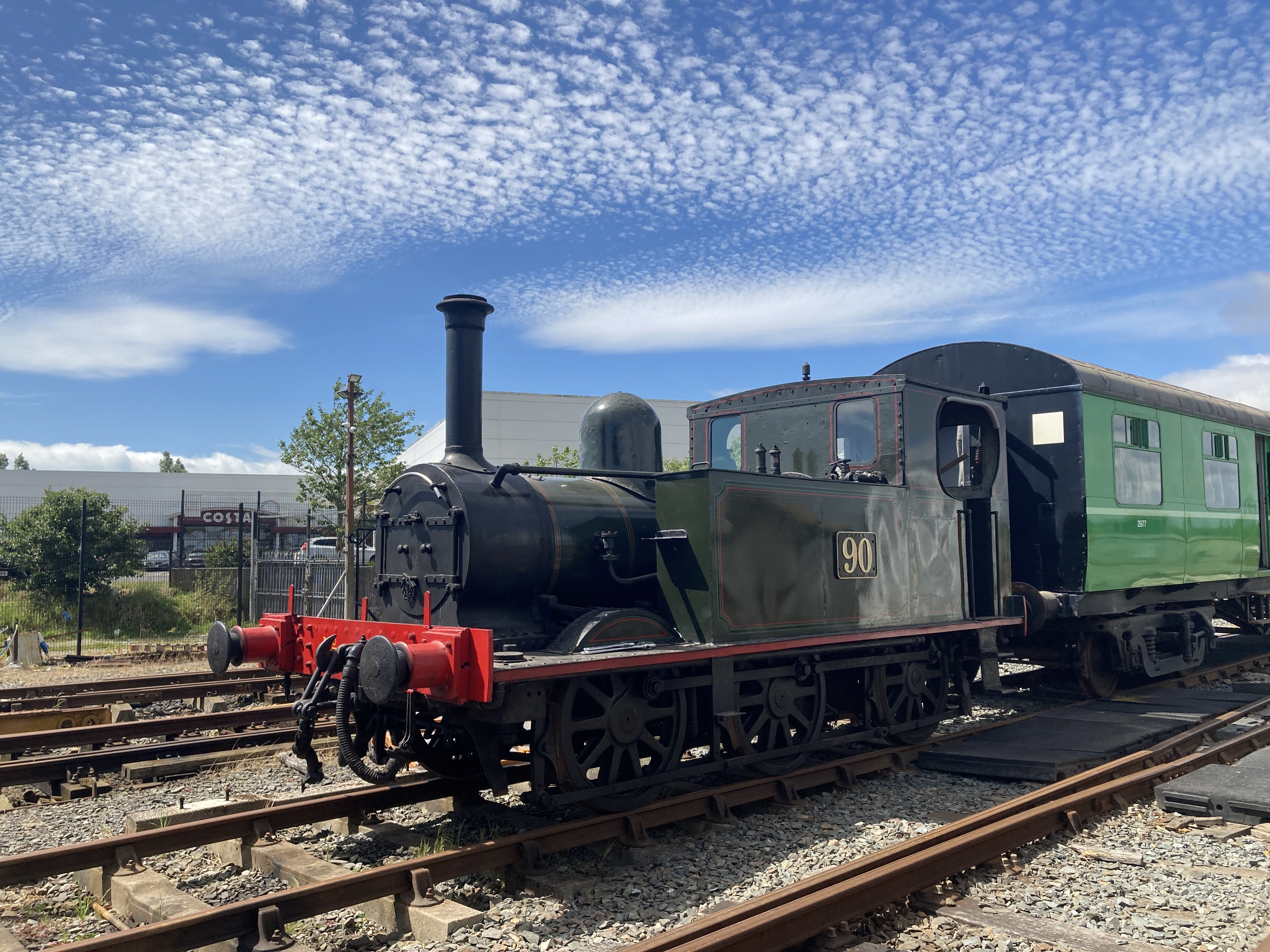
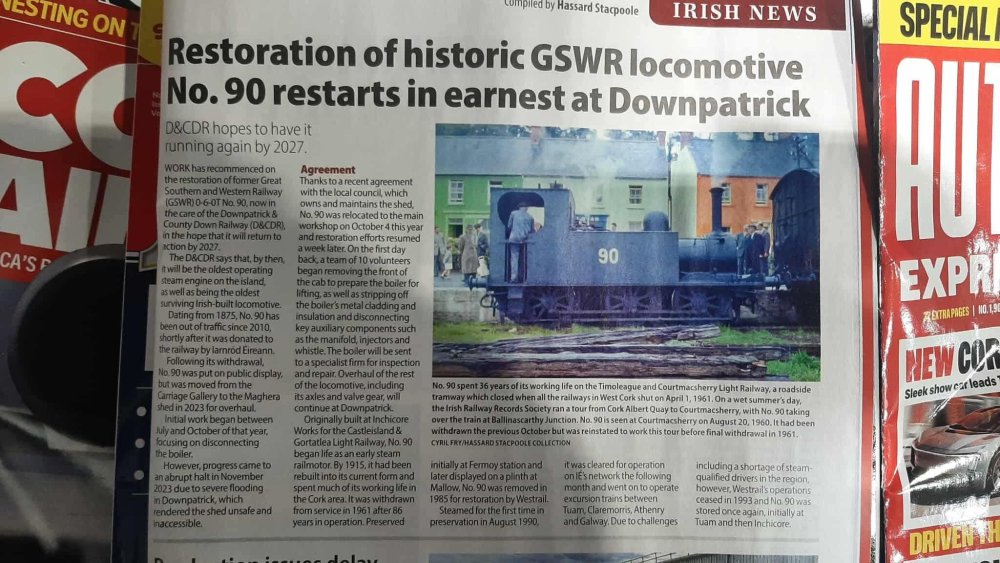
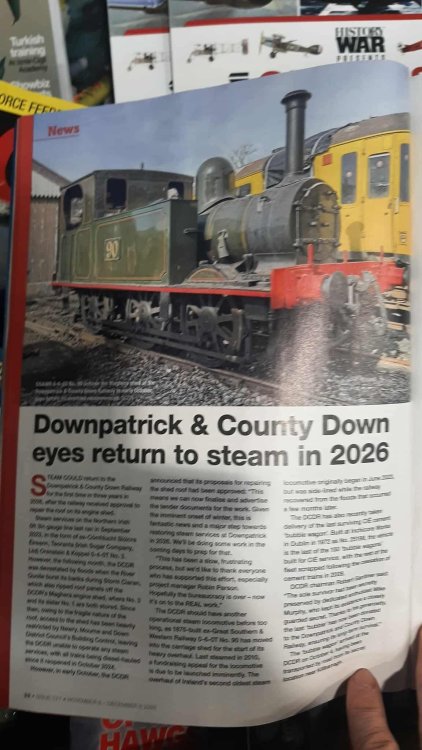
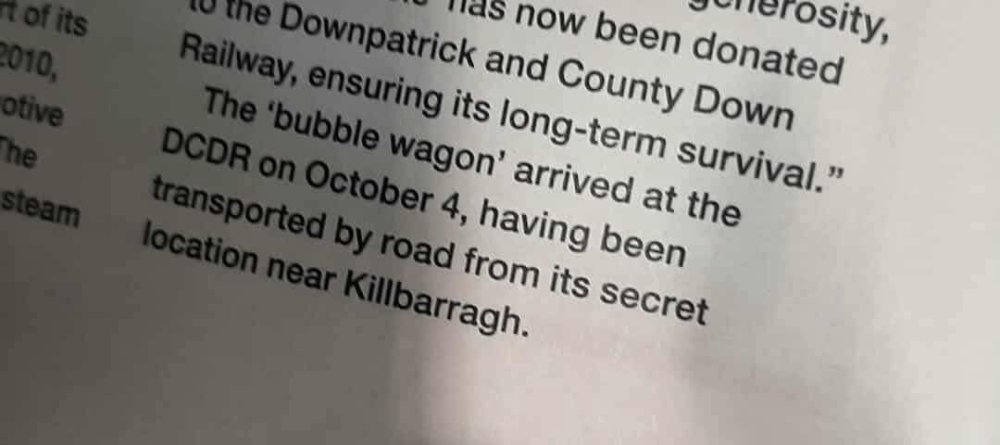
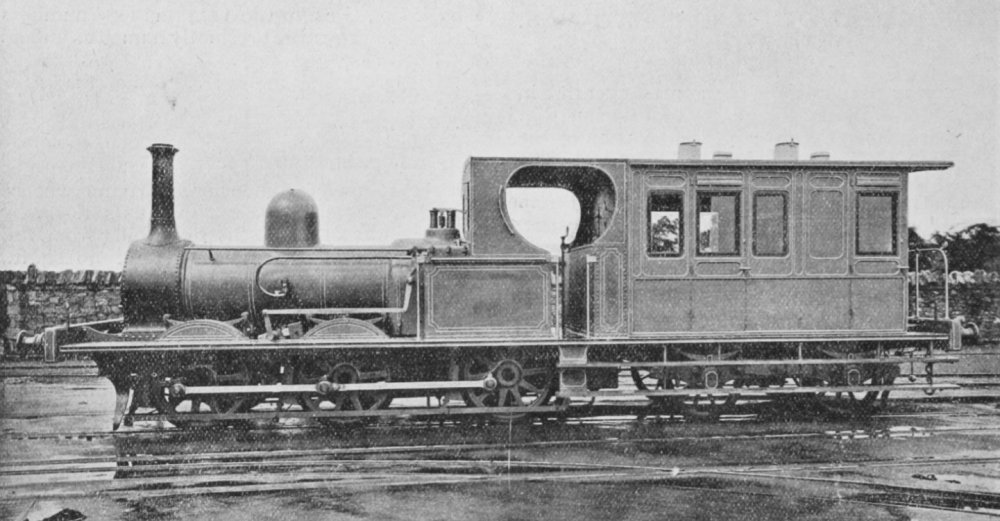
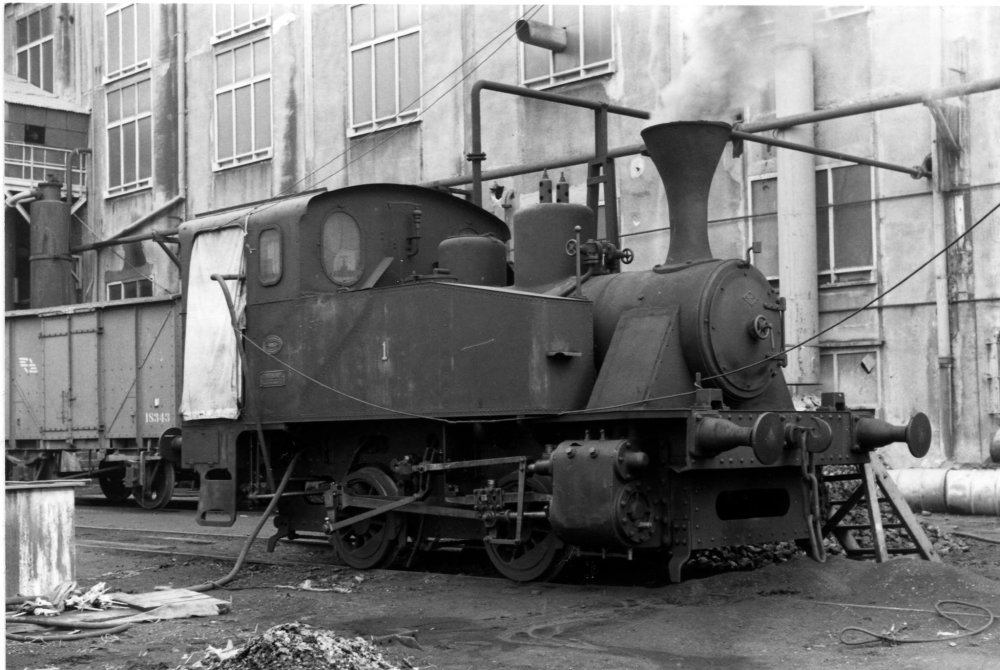
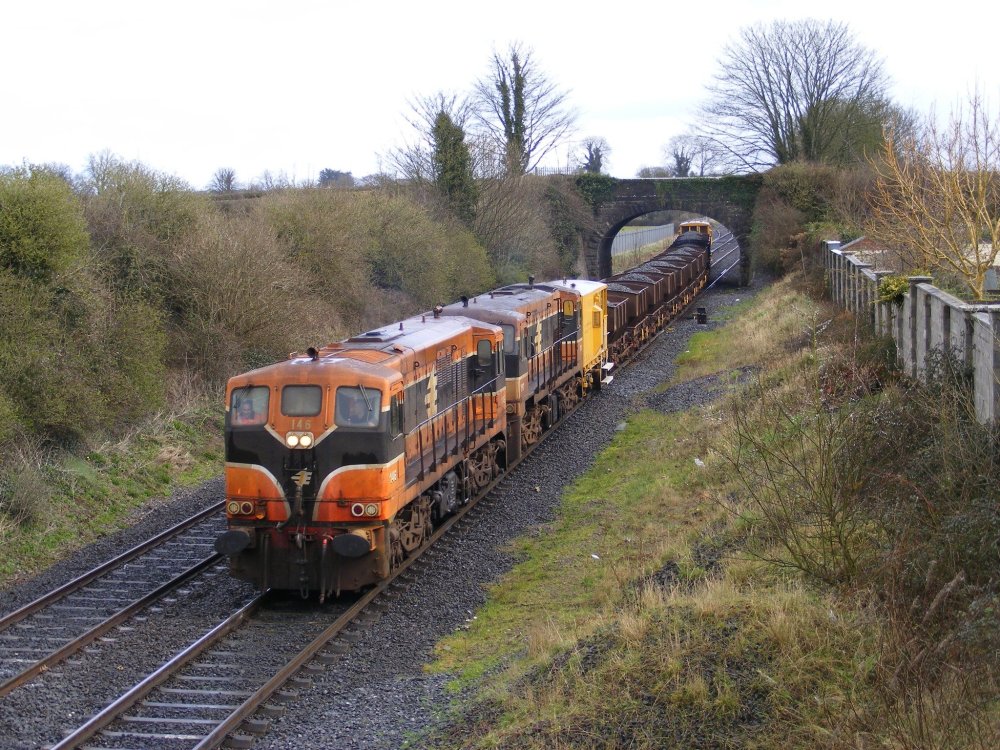
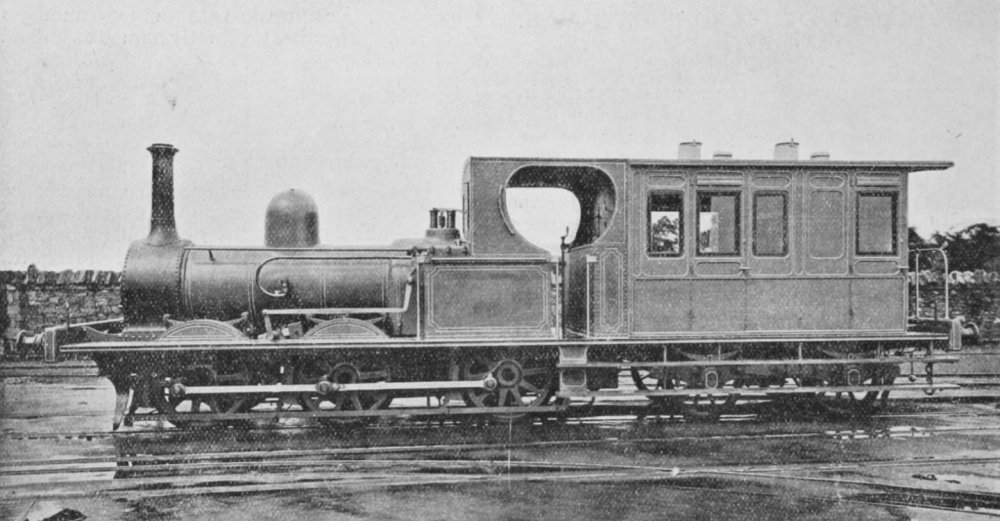
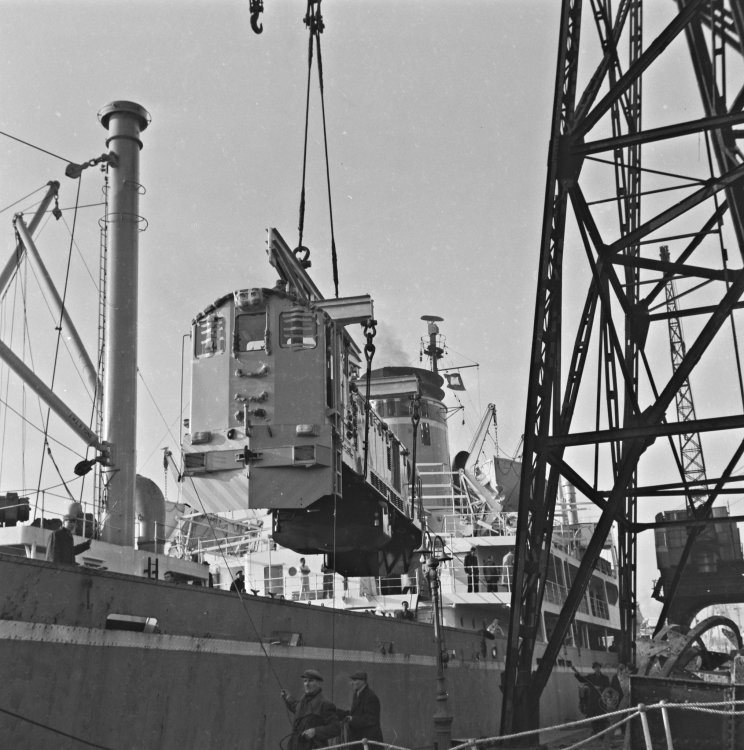
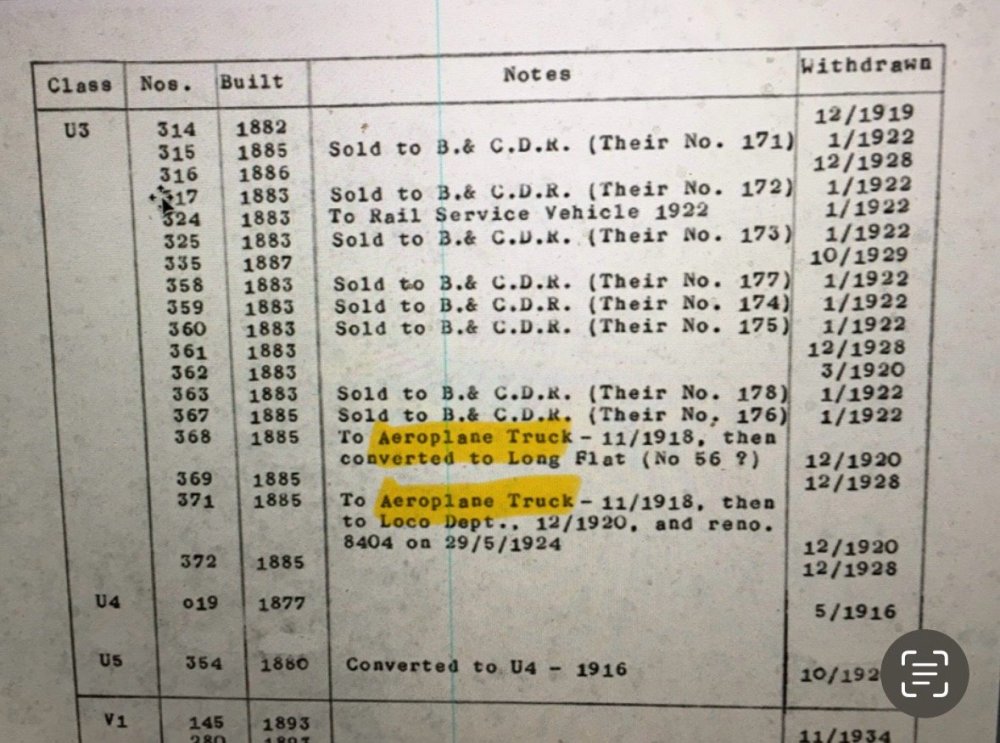
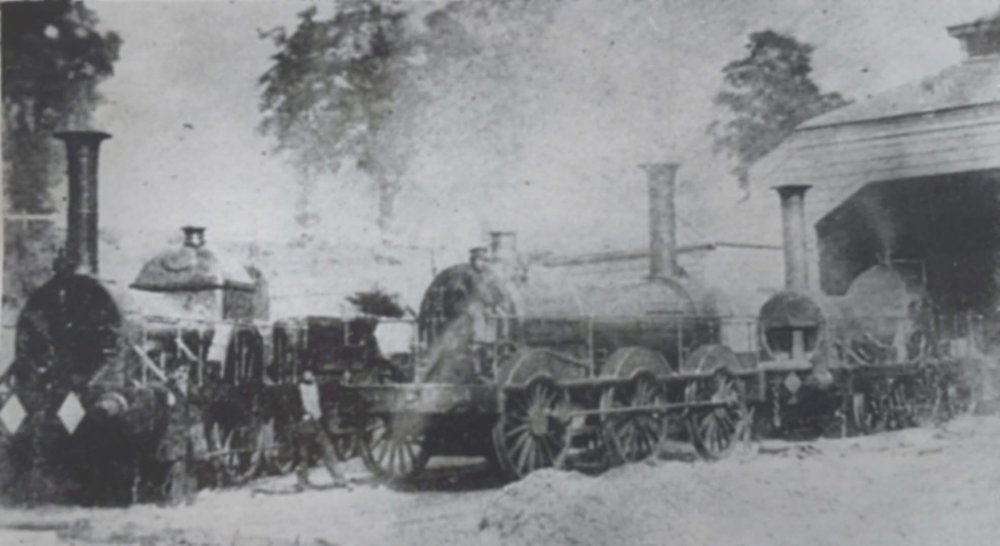
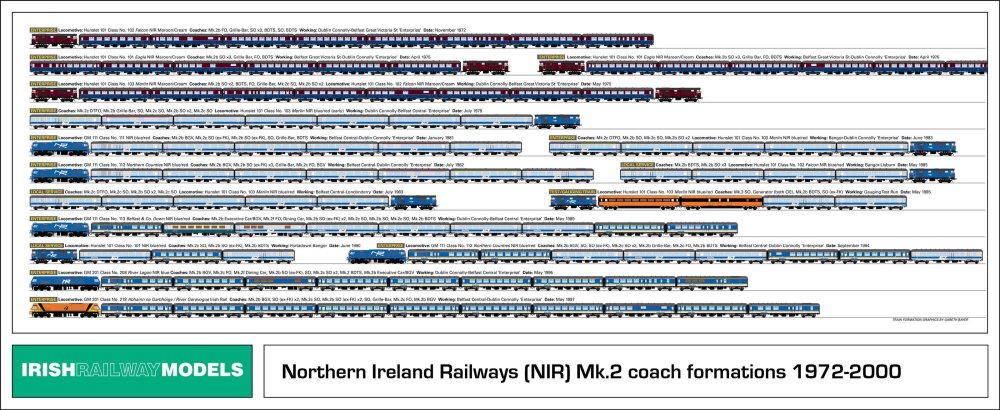
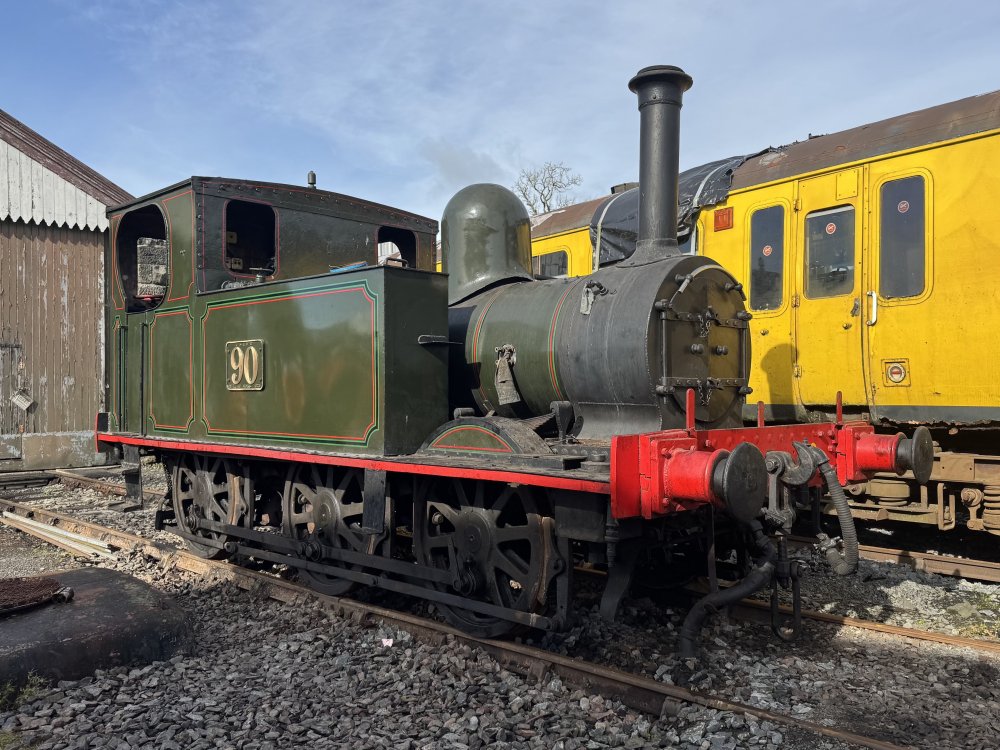
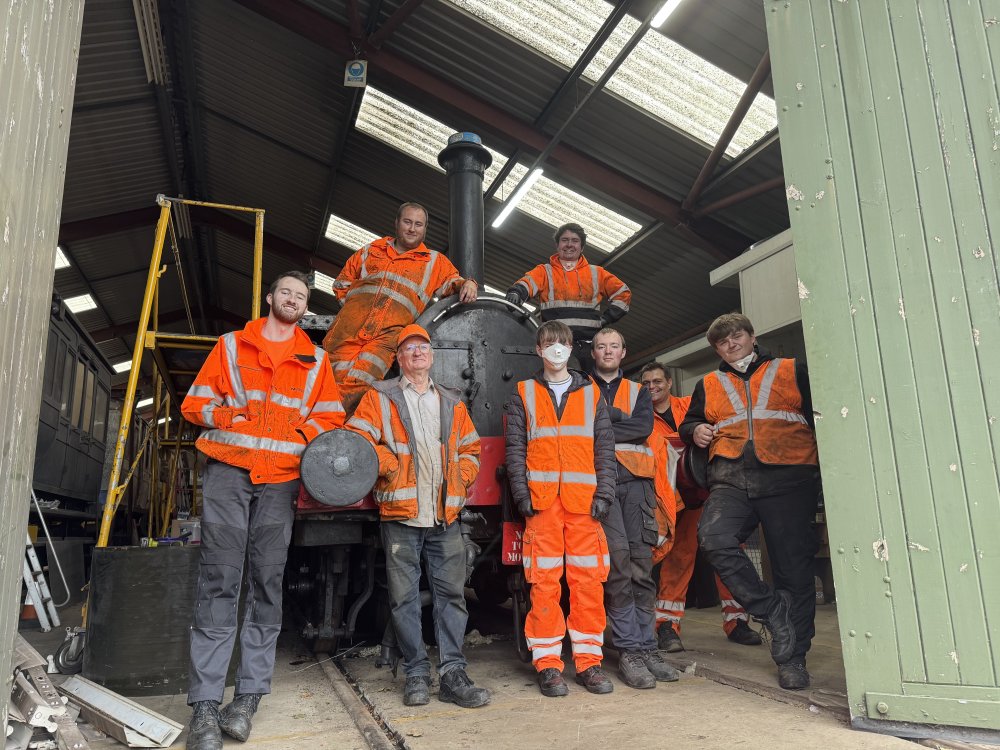
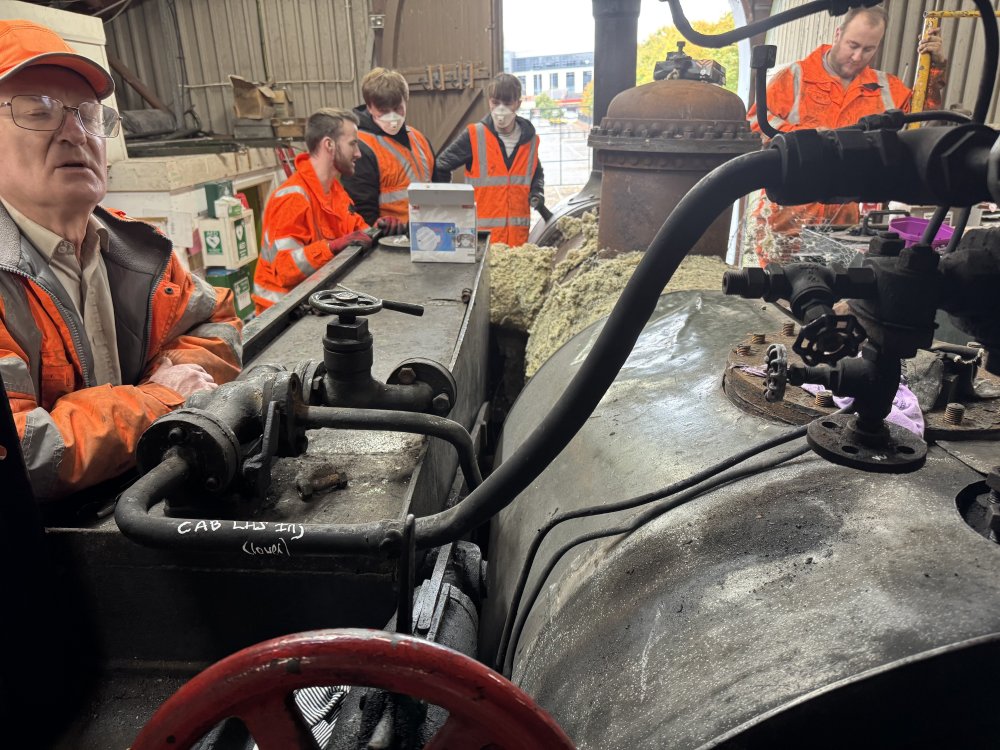
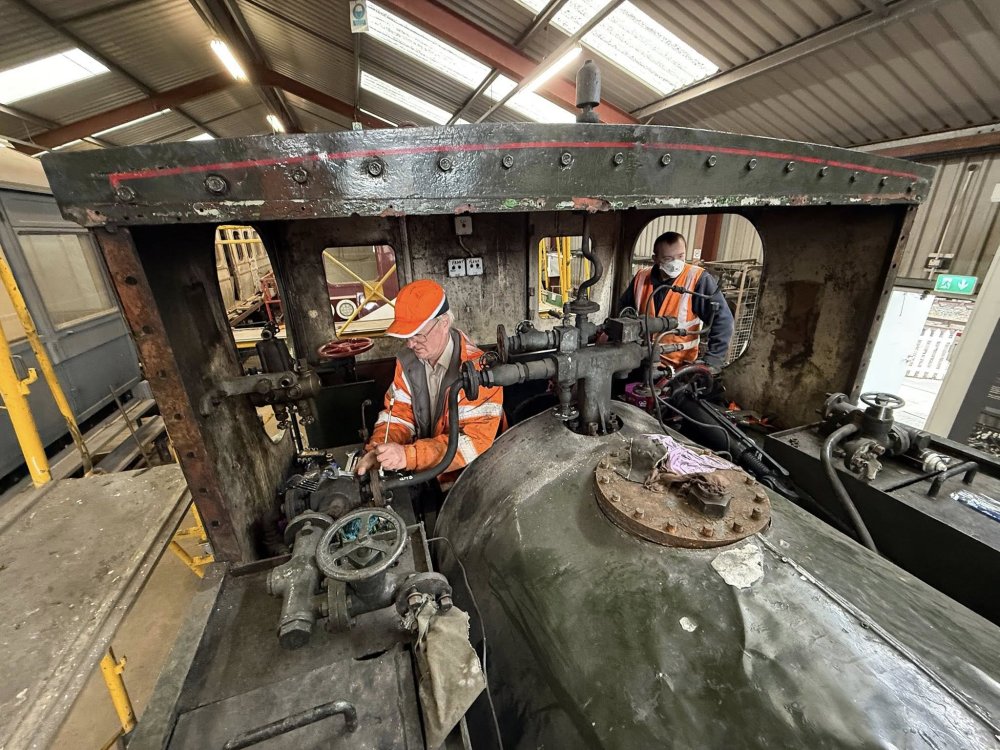
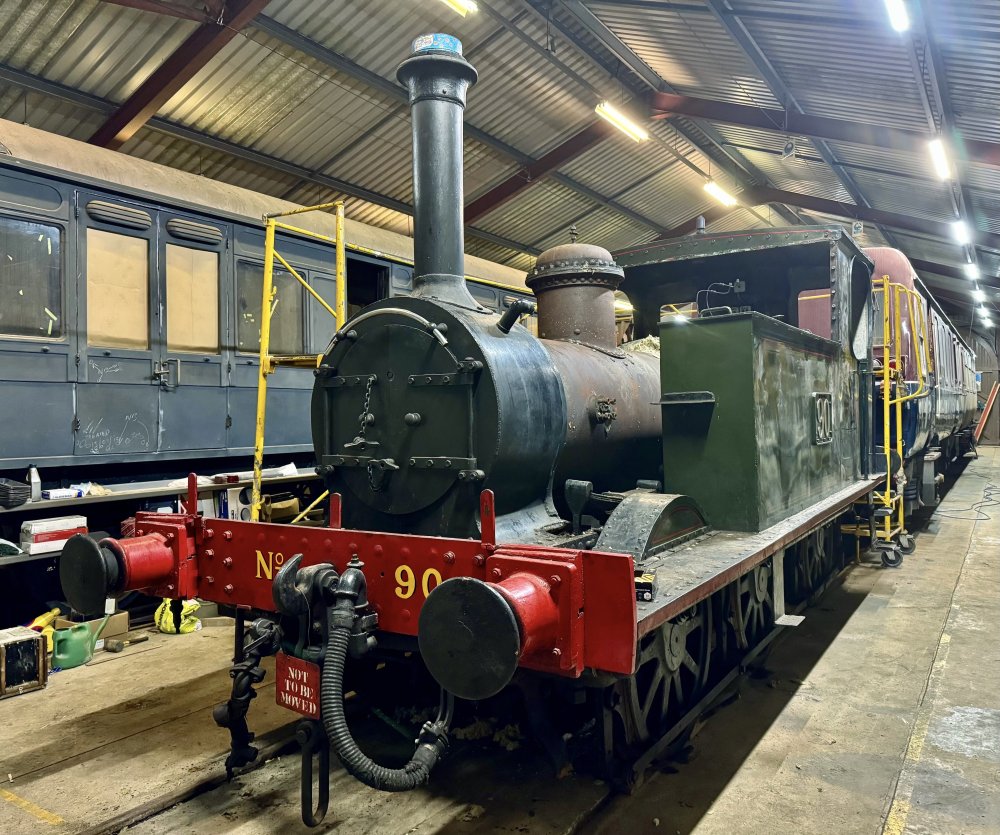

2.thumb.jpg.e2405cabc5d355e12d5c0ef57b943821.jpg)
